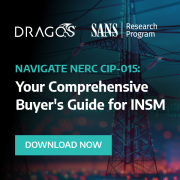Don't Fear the FERC

The Federal Energy Regulatory Commission’s enforcement of its anti-manipulation regulations has resulted in numerous actions with significant civil penalties and disgorgements of profits. While cases such as those involving Constellation, Barclays, and JPMorgan grab the news headlines, many other entities have settled investigations with FERC for multi-million dollar amounts that, although smaller by comparison, can still cause a significant hit to a company’s bottom line.
All companies engaging in energy trading – whether large or small, and whether directly regulated by FERC or not – must be mindful of this growing area of enforcement and should undertake actions to minimize enforcement risk. Many companies will, rightfully, view the risk of FERC enforcement proceedings as minimal, particularly if the company believes it runs a fully compliant operation. FERC, however, investigates many matters that ultimately do not result in civil penalties. Companies must thus be prepared to support and defend their actions even if they have done nothing wrong. In addition, because this enforcement program is its relative infancy and has not been meaningfully tested in the courts, it cannot be understated that there are few bright lines that distinguish creative and aggressive trading from market manipulation.
In this regard, companies can undertake several straightforward yet effective steps to minimize the likelihood of an investigation and reduce the risk of an adverse outcome in the end. Any of these suggestions, however, should be discussed with counsel before implementation.
Rule 1 – An Ounce of Prevention Is Worth Many Pounds of Cure
FERC has stated that companies should maintain a “culture of compliance.” To most, this means that executives must lead by example and instill appropriate values in their employees. But more is required than published codes of conduct and statements of executives to instill fully a culture of compliance. In this regard, an ounce of prevention in instilling a true culture of compliance is worth many pounds of cure. But instilling a true culture of compliance requires more than just management say-so. It requires substantive training, management presence, and willingness of the company to undertake potentially unpopular actions (including appropriate disciplinary actions) when necessary to ensure compliance.
One effective means of instilling a culture of compliance is regular, substantive, and meaningful training of employees with regards to compliance matters. Each session need not be extensive. Indeed, employees often learn better in shorter increments rather than in day-long sessions. Most companies have regular department meetings and brief compliance training sessions. These gatherings can be used as a place to reinforce the “culture of compliance” message and convey important information in a timely manner. Certain lessons likely warrant repeating at these sessions (e.g., “Routinely losing money on one type of transaction will likely raise FERC’s eyebrows, so keep a close eye on your P&L”), but the balance of the discussion should change subject regularly, and focus on new developments when they happen, in order to keep people’s attention. Training is critical because many energy traders come from backgrounds outside the regulated world of wholesale power and have little to no exposure to FERC.
Executive or senior management attendance and involvement at such training can be valuable as well. Not only does it reinforce that the culture of compliance comes from the top, but it provides a forum for employees to express concerns and ideas, and for management to provide guidance that is consistent with the overall goals and practices of the company. In this vein, while many companies have “compliance hotlines” to report concerns to management, some have also adopted “no retaliation” policies to further encourage reporting. It may be appropriate, however, to limit any such policies so that deliberate or reckless acts have real adverse consequences for the people involved.
Rule 2 – Be Present, Be Vigilant, Be Proactive
Management proclamations and training in the culture of compliance can only go so far. People forget things and “when the cat is away, the mice [often] will play.” Sometimes the best defense is a good offense, which, in the enforcement context, means oversight and proactive efforts to identify problems.
Out of sight means out of mind. While a poster stating a company’s code of conduct is a useful reminder, it is no substitute for compliance personnel being present. Their presence not only reminds employees that their actions will be scrutinized, but, on a more positive note, it provides employees an easy opportunity to ask questions. This two-way communication is critical to establishing an effective compliance program. Where compliance personnel come from the in-house legal team, management may want them to sit in the legal department. But management should also consider giving them a second office, or perhaps even better, a desk on the trading floor so that they can spend part of their time shoulder-to-shoulder with traders.
Presence means little, however, if personnel – traders and management alike – are not vigilant. Everyone must keep open eyes and ears toward what is happening. Willful ignorance might seem inviting, but it is unlikely to serve a company well in the long term. Questions should be asked, but without accusation. Traders should understand that this is not an indictment but merely part of the process of ensuring compliance. If management or other traders have questions about certain actions, FERC will likely as well. It is better to understand the actions sooner rather than later.
Vigilance often involves proactive efforts by companies. Management should not wait for employees or FERC to identify concerns. Often, that will come too late and well after questionable conduct has occurred. Further, employees might not have access to the information about other employees needed to connect the dots and identify an issue. Management will have the data and should mine it for issues. While most companies investigate outsized losses, they should also investigate outsized wins to ensure that they were attained in a compliant manner. If companies record IMs or other communications, they might also want to spot check them or search for words that could raise compliance concerns.
Rule 3 – Document Thoughtfully
A paper trail often can be the best defense in the face of an investigation. Actions and reasons for actions are often forgotten with time, and FERC may ask questions many months or even years after trades took place. In the rapid world of trading, memories can get fuzzy quickly and employees who hold key information can leave. Documenting events as they occur can be useful in answering regulators’ questions.
While documenting can be helpful in the long run, it can also be a double-edged sword. However, having no document policy is unlikely to help anyone. While there is no one-size-fits-all policy, merely having a document policy may be the most important step. The advice of counsel with regard to the development of a document policy is critical, particularly as to the best means to preserving attorney-client privilege, where available.
One area of documentation that should not be controversial, however, is the need to keep business records – including trading data – in an orderly manner. Sloppy recordkeeping might be perceived as general sloppiness and a lack of attention to compliance obligations.
Rule 4 – Know Thy Regulator
A regulator’s job is to enforce the law. Companies and employees must understand and respect that fact. The regulator’s job includes looking at actions skeptically. Arguing with a police officer who asked “why were you speeding” accomplishes little. Getting defensive with regulators looking into trading activities accomplishes little as well (and might make regulators think there is something to hide). Be prepared to defend actions, but do not get defensive.
Companies should look at their own trading activities with a skeptical eye as well. Ask “How would this look to FERC if viewed in the worst way possible?” Certain perfectly compliant transactions might look inappropriate under certain circumstances or if only some of the data is seen. Defending an investigation into perfectly legal action can be costly even if the action is dismissed. Thus it may be better to avoid activities that, although legal, might appear to the regulator to be problematic and result in an investigation.
The body of law surrounding FERC enforcement of energy trading is still in its infancy as compared to that of other federal agencies. As a result, almost every FERC enforcement order provides useful study. While some issuances might seem to be “more of the same,” there are often subtleties that can indicate how FERC’s thinking and policies are evolving. Companies should, of course, stay knowledgeable about the facts underlying new orders but should also look for these subtleties as they can be invaluable in understanding FERC and avoiding, or shortening, investigations.
While there is no one-size-fits-all for a compliance program, certain common elements exist among many effective compliance programs – the need for a true culture of compliance, active oversight of trading operations, a balance documentation policy, and an understanding of regulators’ policies. Even the best compliance program is no guarantee against an investigation, but it will likely minimize the likelihood of the investigation and any adverse consequences stemming from it.
ABOUT THE AUTHOR
Jeffrey M. Jakubiak (Jeffrey.Jakubiak@troutmansanders.com) is a partner in the New York City and Washington, DC offices of Troutman Sanders LLP. His practice focuses on FERC regulation of energy trading and electric-asset transactions. This article does not constitute legal advice nor does it establish an attorney-client relationship between the author and the reader. The opinions expressed in this article are the author’s own and do not necessarily reflect of the views of Troutman Sanders LLP or its clients.




